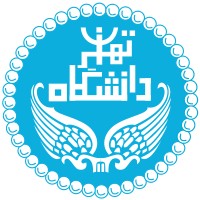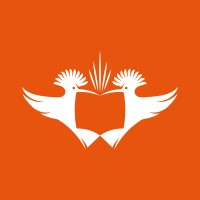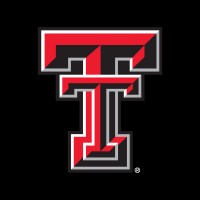Company Details
university-of-tehran
12,941
257,183
6113
ut.ac.ir
25
UNI_9904853
Completed

University of Tehran Company CyberSecurity Posture
ut.ac.irUniversity of Tehran, an iconic institution of higher education in Iran, traces its origins back seven centuries to its foundation as a houza (traditional religious school). Over time, it evolved from this religious structure into a modern academic institution. About a century ago, the Dar-ol-Fonoon College became the first engineering school in its modern form, marking a significant step in Iran's higher education landscape. The University of Tehran, as it is known today, was officially inaugurated in the winter of 1934. Currently, the University of Tehran offers 976 programs across 500 fields within 39 faculties and 120 departments located on campuses in Tehran, Qom, Karaj, Kish, and Jolfa. The university is supported by a distinguished faculty of over 2,000 tenured members. Approximately 15% of Iran’s Centers of Excellence, as recognized by the Ministry of Science, Research, and Technology, are affiliated with the University of Tehran. UT’s dedication to research is reflected in its more than 40 research centers, 3,500 laboratories, and its leading press, which publishes over 50 peer-reviewed scientific journals. For more details on the University of Tehran’s colleges and faculties, please visit: https://ut.ac.ir/en/page/9786/colleges-faculties-international-campuses
Company Details
university-of-tehran
12,941
257,183
6113
ut.ac.ir
25
UNI_9904853
Completed
Between 750 and 799

 UT Global Score (TPRM)
UT Global Score (TPRM)XXXX



No incidents recorded for University of Tehran in 2025.
No incidents recorded for University of Tehran in 2025.
No incidents recorded for University of Tehran in 2025.
UT cyber incidents detection timeline including parent company and subsidiaries

University of Tehran, an iconic institution of higher education in Iran, traces its origins back seven centuries to its foundation as a houza (traditional religious school). Over time, it evolved from this religious structure into a modern academic institution. About a century ago, the Dar-ol-Fonoon College became the first engineering school in its modern form, marking a significant step in Iran's higher education landscape. The University of Tehran, as it is known today, was officially inaugurated in the winter of 1934. Currently, the University of Tehran offers 976 programs across 500 fields within 39 faculties and 120 departments located on campuses in Tehran, Qom, Karaj, Kish, and Jolfa. The university is supported by a distinguished faculty of over 2,000 tenured members. Approximately 15% of Iran’s Centers of Excellence, as recognized by the Ministry of Science, Research, and Technology, are affiliated with the University of Tehran. UT’s dedication to research is reflected in its more than 40 research centers, 3,500 laboratories, and its leading press, which publishes over 50 peer-reviewed scientific journals. For more details on the University of Tehran’s colleges and faculties, please visit: https://ut.ac.ir/en/page/9786/colleges-faculties-international-campuses


One of the largest universities in the United States, The Ohio State University is a leading research university and the model for Ohio's public higher education institutes. Founded in 1870 as a land-grant university, it consistently ranks as one of the top public universities in the United States.

The Georgia Institute of Technology is one of the nation's premier research universities providing a focused, technologically based education to more than 25,000 undergraduate and graduate students . Ranked seventh among U.S. News & World Report's top public universities, Georgia Tech offers degrees

It is the vision of the University of Johannesburg to be a premier, embracing, African city university offering a mix of vocational and academic programmes that advances freedom, democracy, equality and human dignity as high ideals of humanity through distinguished scholarship, excellence in teachin

A new era of excellence is dawning at Texas Tech University as it stands on the cusp of being one of the nation's premier research institutions. Research and enrollment numbers are at record levels, which cement Texas Tech's commitment to attracting and retaining quality students. In fall 2020, th

Emory University, a top research university located in Atlanta, Georgia, is an inquiry-driven, ethically engaged and diverse community whose members work collaboratively for positive transformation in the world through courageous leadership in teaching, research, scholarship, health care and social

With four campuses in Massachusetts, Tufts is a research university committed to helping students and faculty generate bold ideas, innovate, and become active citizens of the world. Tufts' unique combination of research and liberal arts attracts students, faculty, and staff who thrive in an environm

UC Davis was founded in 1908 to serve the state of California. We do and we always will. Today, that seed planted years ago has grown into one of the world’s top universities. UC Davis has a community of faculty and staff who are leading the way in teaching, research, public service and patient car

The University of Pretoria is a multi-faculty research-intensive university that has remained among the top South African universities in research output and impact. UP is also the top producer of graduates in the country. With campuses in Pretoria and its surrounds, as well as in the country’s econ

Founded in 1898, Northeastern is a global research university with a distinctive, experience-driven approach to education and discovery. The university is a leader in experiential learning, powered by the world’s most far-reaching cooperative education program. We integrate classroom study with opp
.png)
TEHRAN (ANA)- On the first day of the second round of the IoT (Internet of Things) Technology Olympics held on October 28, two teams managed...
The University of Tulsa's Oklahoma Cyber Innovation Institute (OCII) will be teaching students about cyber security at Ernest Childers...
Cyber operations in the Middle East consistently test the limits of international law, exposing how porous and discretionary those limits...
Hackers backing Tehran have targeted US banks, defense contractors and oil industry companies following American strikes on Iranian nuclear facilities.
Federal officials and cybersecurity experts have warned of a heightened risk of cyber attacks.
GPS jamming stemming from military strikes in region could be to blame.
The Islamic Republic's authorities have refused to return the body of Mohsen Langarneshin, a cybersecurity expert executed on Wednesday, ...
Explore how Iran is leveraging AI for cyberwarfare, influence ops, military tech, and domestic surveillance. A deep dive into Tehran's...
Over the past few decades, Iran has been quietly building its cyber capability in the shadow of great powers.

Explore insights on cybersecurity incidents, risk posture, and Rankiteo's assessments.
The official website of University of Tehran is http://www.ut.ac.ir/.
According to Rankiteo, University of Tehran’s AI-generated cybersecurity score is 797, reflecting their Fair security posture.
According to Rankiteo, University of Tehran currently holds 0 security badges, indicating that no recognized compliance certifications are currently verified for the organization.
According to Rankiteo, University of Tehran is not certified under SOC 2 Type 1.
According to Rankiteo, University of Tehran does not hold a SOC 2 Type 2 certification.
According to Rankiteo, University of Tehran is not listed as GDPR compliant.
According to Rankiteo, University of Tehran does not currently maintain PCI DSS compliance.
According to Rankiteo, University of Tehran is not compliant with HIPAA regulations.
According to Rankiteo,University of Tehran is not certified under ISO 27001, indicating the absence of a formally recognized information security management framework.
University of Tehran operates primarily in the Higher Education industry.
University of Tehran employs approximately 12,941 people worldwide.
University of Tehran presently has no subsidiaries across any sectors.
University of Tehran’s official LinkedIn profile has approximately 257,183 followers.
University of Tehran is classified under the NAICS code 6113, which corresponds to Colleges, Universities, and Professional Schools.
No, University of Tehran does not have a profile on Crunchbase.
Yes, University of Tehran maintains an official LinkedIn profile, which is actively utilized for branding and talent engagement, which can be accessed here: https://www.linkedin.com/company/university-of-tehran.
As of November 27, 2025, Rankiteo reports that University of Tehran has not experienced any cybersecurity incidents.
University of Tehran has an estimated 14,029 peer or competitor companies worldwide.
Total Incidents: According to Rankiteo, University of Tehran has faced 0 incidents in the past.
Incident Types: The types of cybersecurity incidents that have occurred include .
.png)
Angular is a development platform for building mobile and desktop web applications using TypeScript/JavaScript and other languages. Prior to versions 19.2.16, 20.3.14, and 21.0.1, there is a XSRF token leakage via protocol-relative URLs in angular HTTP clients. The vulnerability is a Credential Leak by App Logic that leads to the unauthorized disclosure of the Cross-Site Request Forgery (XSRF) token to an attacker-controlled domain. Angular's HttpClient has a built-in XSRF protection mechanism that works by checking if a request URL starts with a protocol (http:// or https://) to determine if it is cross-origin. If the URL starts with protocol-relative URL (//), it is incorrectly treated as a same-origin request, and the XSRF token is automatically added to the X-XSRF-TOKEN header. This issue has been patched in versions 19.2.16, 20.3.14, and 21.0.1. A workaround for this issue involves avoiding using protocol-relative URLs (URLs starting with //) in HttpClient requests. All backend communication URLs should be hardcoded as relative paths (starting with a single /) or fully qualified, trusted absolute URLs.
Forge (also called `node-forge`) is a native implementation of Transport Layer Security in JavaScript. An Uncontrolled Recursion vulnerability in node-forge versions 1.3.1 and below enables remote, unauthenticated attackers to craft deep ASN.1 structures that trigger unbounded recursive parsing. This leads to a Denial-of-Service (DoS) via stack exhaustion when parsing untrusted DER inputs. This issue has been patched in version 1.3.2.
Forge (also called `node-forge`) is a native implementation of Transport Layer Security in JavaScript. An Integer Overflow vulnerability in node-forge versions 1.3.1 and below enables remote, unauthenticated attackers to craft ASN.1 structures containing OIDs with oversized arcs. These arcs may be decoded as smaller, trusted OIDs due to 32-bit bitwise truncation, enabling the bypass of downstream OID-based security decisions. This issue has been patched in version 1.3.2.
Suricata is a network IDS, IPS and NSM engine developed by the OISF (Open Information Security Foundation) and the Suricata community. Prior to versions 7.0.13 and 8.0.2, working with large buffers in Lua scripts can lead to a stack overflow. Users of Lua rules and output scripts may be affected when working with large buffers. This includes a rule passing a large buffer to a Lua script. This issue has been patched in versions 7.0.13 and 8.0.2. A workaround for this issue involves disabling Lua rules and output scripts, or making sure limits, such as stream.depth.reassembly and HTTP response body limits (response-body-limit), are set to less than half the stack size.
Suricata is a network IDS, IPS and NSM engine developed by the OISF (Open Information Security Foundation) and the Suricata community. In versions from 8.0.0 to before 8.0.2, a NULL dereference can occur when the entropy keyword is used in conjunction with base64_data. This issue has been patched in version 8.0.2. A workaround involves disabling rules that use entropy in conjunction with base64_data.

Get company history
















Every week, Rankiteo analyzes billions of signals to give organizations a sharper, faster view of emerging risks. With deeper, more actionable intelligence at their fingertips, security teams can outpace threat actors, respond instantly to Zero-Day attacks, and dramatically shrink their risk exposure window.
Identify exposed access points, detect misconfigured SSL certificates, and uncover vulnerabilities across the network infrastructure.
Gain visibility into the software components used within an organization to detect vulnerabilities, manage risk, and ensure supply chain security.
Monitor and manage all IT assets and their configurations to ensure accurate, real-time visibility across the company's technology environment.
Leverage real-time insights on active threats, malware campaigns, and emerging vulnerabilities to proactively defend against evolving cyberattacks.




